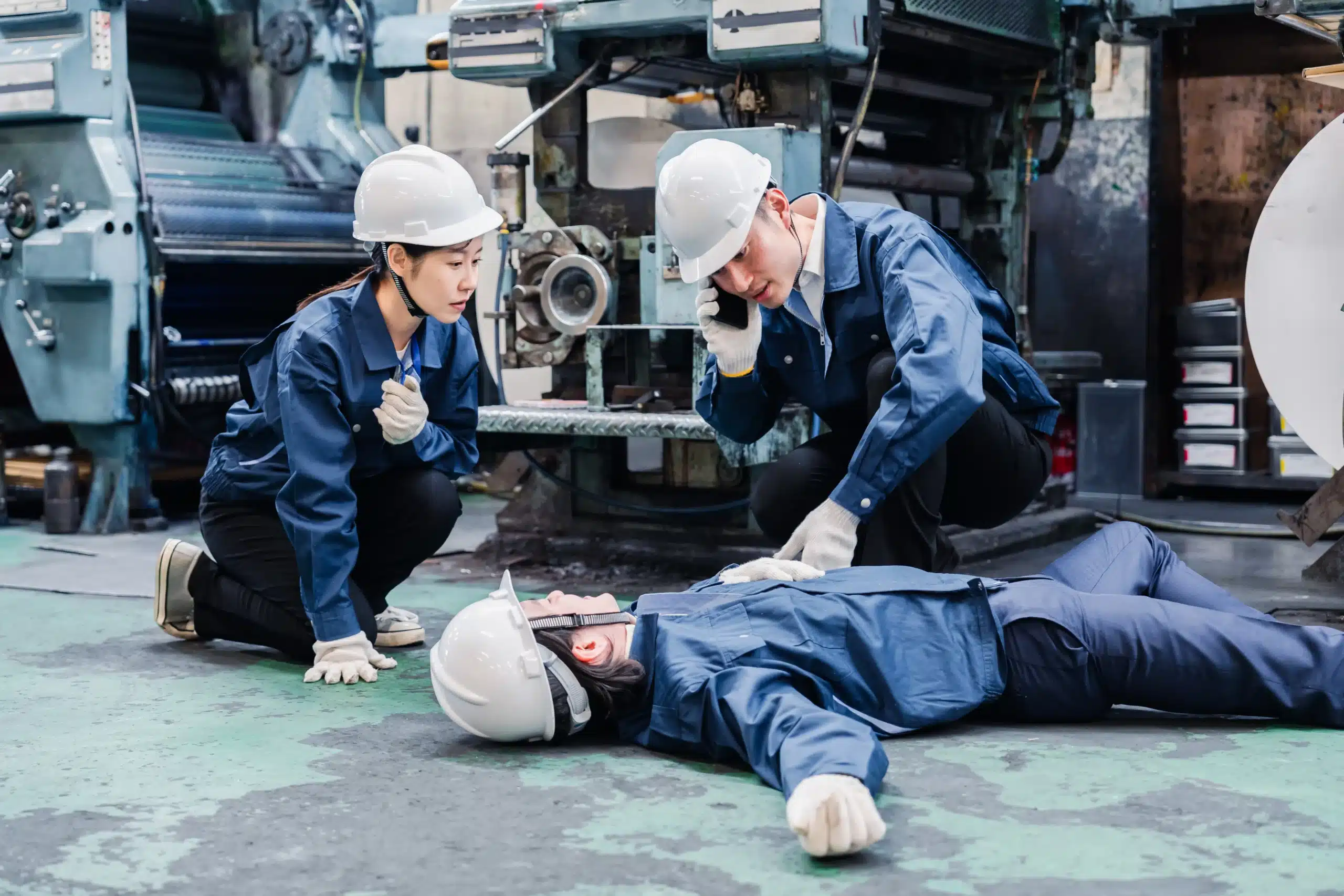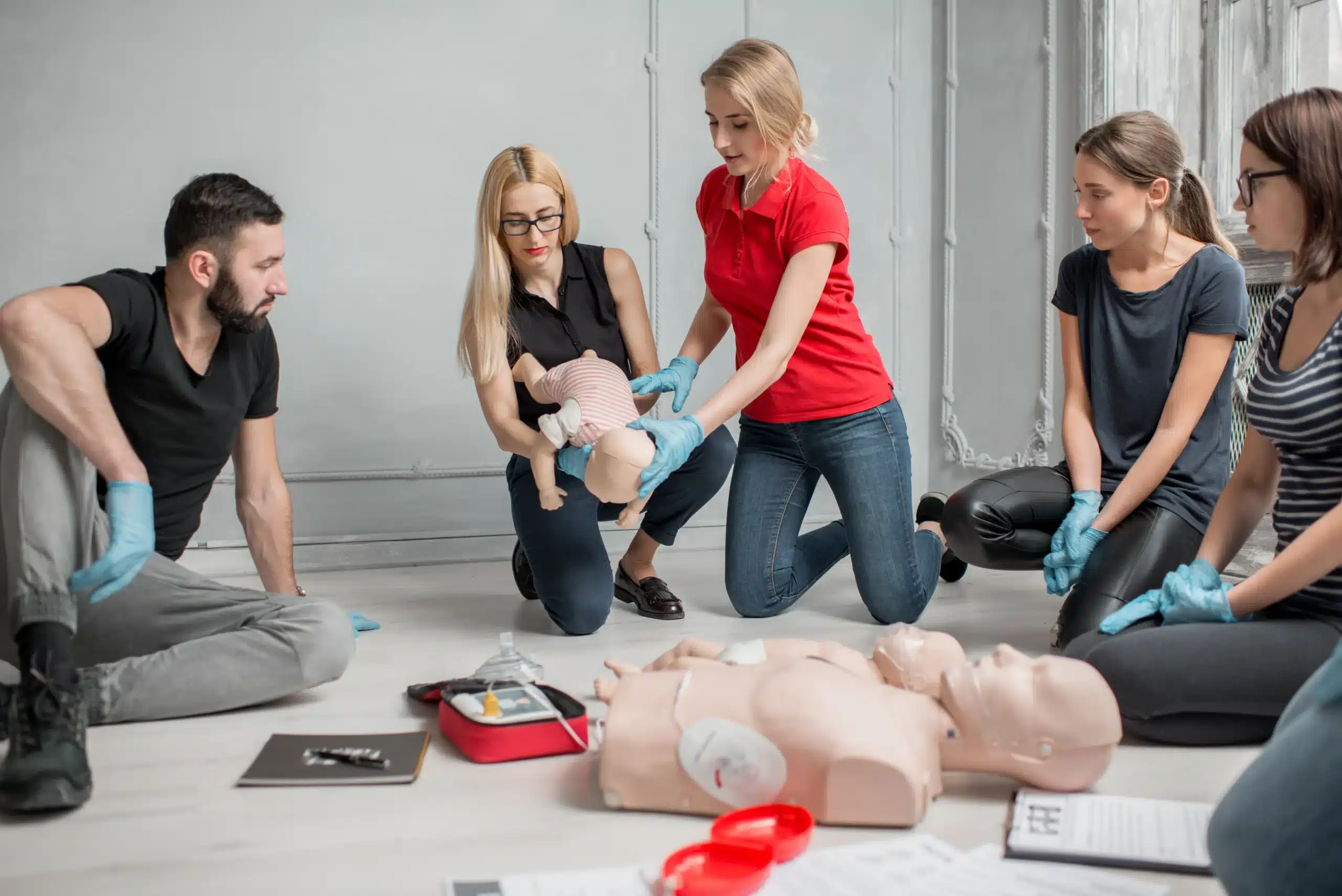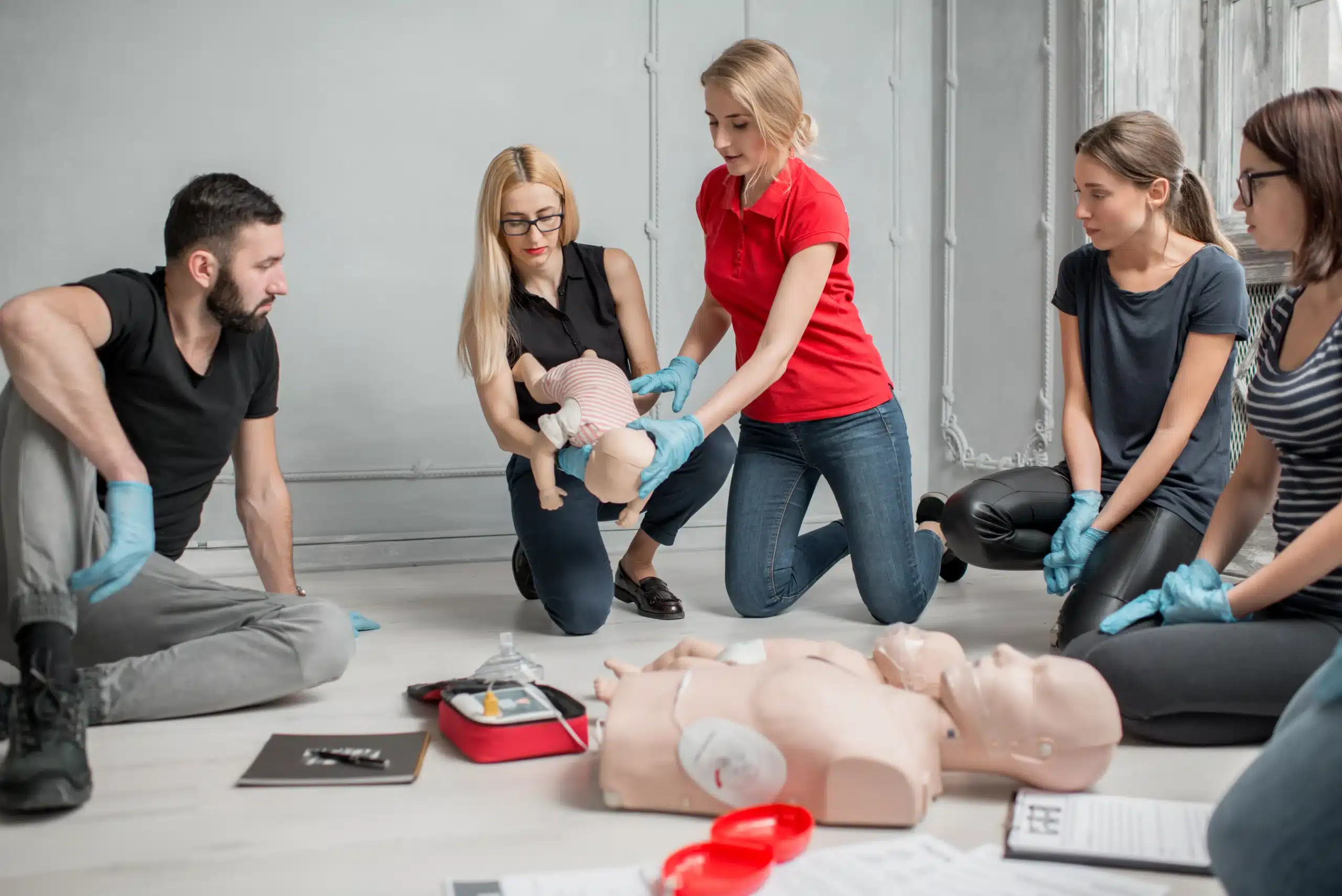In a heartbeat, lives can change forever. Workplace CPR and first-aid training equip employees with life-saving skills. These skills make a critical difference in emergencies. In this blog, we explore why this training is vital for every workplace.
Workplace safety is paramount. CPR and first-aid training empower employees to act swiftly in crises. This training can reduce the risk of severe injury or death. In this post, you’ll learn about the importance of this training, the benefits it provides, and how to implement it effectively.
The Lifesaving Power of CPR Training
Cardiopulmonary Resuscitation (CPR) is a lifesaver. It keeps blood flowing to the brain during cardiac arrest. This flow is vital until professional help arrives. Without it, brain damage can occur within minutes.
Workplace CPR training ensures that employees can respond quickly. A quick response can double or triple survival chances in cardiac emergencies. This training offers peace of mind to both workers and employers.
Additionally, workplace stressors, long hours, and sedentary lifestyles increase health risks. Training employees in CPR mitigates these risks. Every second counts in emergencies, and trained individuals make a significant difference.
First-Aid Training Prevents Further Injury
First-aid training is equally crucial. It teaches employees to treat injuries promptly. This training reduces the risk of complications from untreated wounds. A prompt response can prevent infections and promote faster recovery.
Injuries are common in workplaces. Slips, trips, and falls account for many workplace accidents. With proper first-aid training, minor injuries won’t escalate into major problems. Employees can handle cuts, burns, and sprains effectively.
Furthermore, first-aid training boosts confidence and reduces panic. Employees feel empowered knowing they can help. This empowerment leads to a safer work environment and fosters a supportive workplace culture.
Compliance and Legal Requirements
Many countries mandate workplace safety training. Compliance with these laws is non-negotiable. Failing to comply can lead to hefty fines and legal consequences. Employers must ensure their workforce receives adequate training.
In the United States, the Occupational Safety and Health Administration (OSHA) sets guidelines. CPR and first-aid training help meet these guidelines. Training reduces liability and demonstrates a commitment to employee well-being.
Implementing training programs shows due diligence. It builds trust between employers and employees. A safe workplace attracts talent and boosts retention, as staff see that their well-being matters to the organization.
Building a Culture of Safety
Safety culture starts with training. By prioritizing CPR and first-aid instruction, organizations send a clear message. Safety is a core value, not just a box-ticking exercise. Employees adopt this mindset and actively contribute to workplace safety.
Safety culture encourages vigilance and reporting. Employees report hazards without fear of retaliation. Open communication channels prevent accidents and promote continuous improvement.
Additionally, a strong safety culture complements other initiatives. It integrates seamlessly with health and wellness programs. Employees who feel safe are more engaged and productive.
Psychological Benefits for Employees
Training impacts mental health positively. Knowing they can help in emergencies reduces anxiety. Employees focus on their tasks without worrying about potential dangers.
Training also fosters camaraderie. Working together to ensure safety strengthens team bonds. Employees support each other and build rapport.
Furthermore, training sessions serve as team-building exercises. They break monotony and inject excitement into the workday. Employees return to their tasks with renewed energy and focus.
Practical Implementation of Training Programs
Implementing training programs requires careful planning. First, assess your workplace needs. Consider employee roles, risks, and past incidents. Tailor programs to address these specifics.
Next, choose a reputable training provider. Providers should offer certified courses and experienced instructors. Ensure the training includes hands-on practice for maximum effectiveness.
Finally, schedule regular refreshers. Skills fade over time, so periodic updates are essential. Keep records of employee certifications and update them as needed.
Investing in Training for Long-Term Benefits
Training is an investment, not an expense. It yields long-term benefits for organizations. Initially, training costs may seem high, but they pay off through reduced accidents and absenteeism.
Employee morale and satisfaction improve with training. Workers appreciate employers who invest in their development. This appreciation translates into loyalty and dedication.
Furthermore, trained employees respond to emergencies with confidence. They minimize downtime and financial losses. A well-prepared workforce is a resilient workforce.
Overcoming Common Barriers to Training
Organizations face obstacles when implementing training. Cost, time, and employee resistance are common barriers. Address these challenges proactively for successful training programs.
For cost concerns, explore funding options. Grants and subsidies may be available for safety training. Group discounts from providers also reduce expenses.
Time constraints are manageable with flexible scheduling. Offer sessions at various times to accommodate different shifts. Communicate the benefits clearly to overcome resistance.
Conclusion Harness the Power of Workplace Training
Workplace CPR and first-aid training are indispensable. They save lives, prevent injuries, and create a culture of safety. Investing in training demonstrates a commitment to employee well-being and compliance with legal requirements.
By implementing effective training programs, organizations build resilient workforces. Employees gain confidence, and teams bond over shared experiences. Safety becomes a core value that permeates all aspects of the workplace.
Explore more about implementing training in your organization. Partner with experts to design tailored programs. Your commitment to safety will yield lasting benefits for both employees and the organization.






